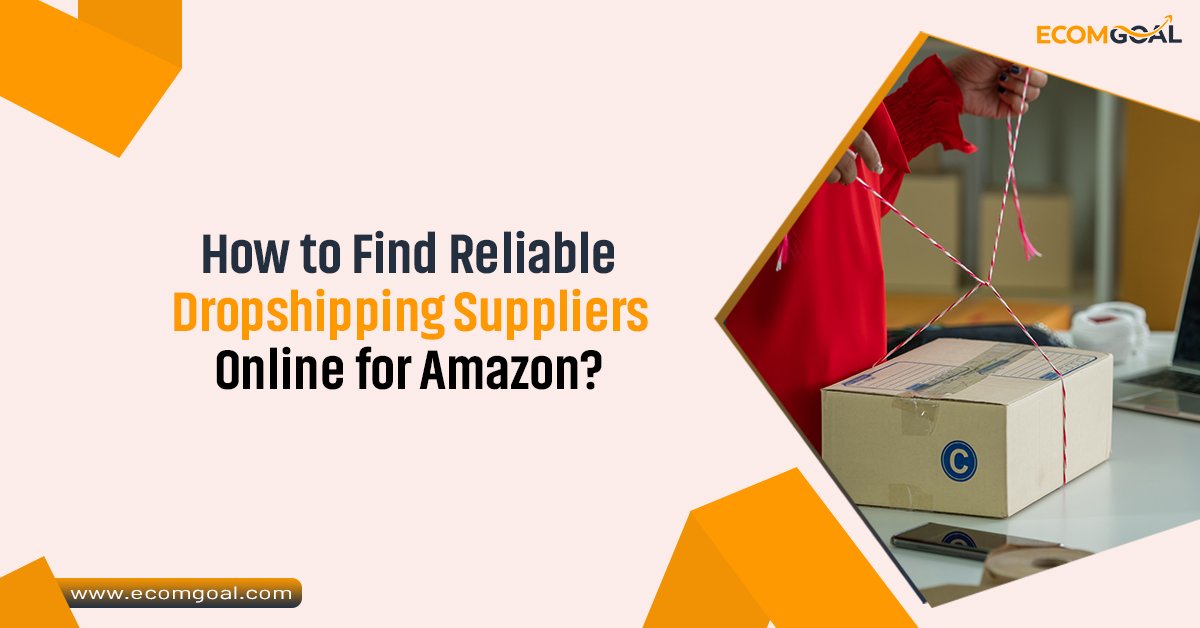
Dropshipping has become an increasingly popular business model, especially on platforms like Amazon. As a dropshipper, you focus on marketing and customer acquisition while your suppliers handle inventory, shipping, and fulfillment. However, finding reliable suppliers is critical to the success of your business. A trustworthy supplier ensures your customers receive high-quality products on time, reducing the risk of negative reviews and returns, which can impact your Amazon seller rating.
In this guide, we will cover how to find reliable dropshipping suppliers online for Amazon, the qualities to look for, red flags to avoid, and the best practices to establish strong supplier relationships.
Step-by-Step Guide How to Find Reliable Dropshipping Suppliers Online for Amazon
1. Understand What Makes a Reliable Supplier
Before diving into where to find suppliers, it’s important to know what makes a supplier reliable. The seeing are key qualities to look for:
- Product Quality: Consistently high-quality products that meet customer expectations.
- Fast and Accurate Shipping: Suppliers who provide fast shipping times with reliable tracking.
- Good Communication: Suppliers should be responsive and transparent about inventory levels, shipping delays, and product availability.
- Fair Pricing: Competitive wholesale pricing that allows for reasonable profit margins.
- Experience in Dropshipping: Ideally, the supplier should have experience working with dropshippers, particularly those selling on Amazon.
2. Types of Dropshipping Suppliers for Amazon
When searching for dropshipping suppliers, you’ll come across different types of suppliers. Here are the main categories:
- Manufacturers: The original producers of products, offering the best prices but often requiring larger order quantities. Some manufacturers will work with dropshippers, but not all.
- Wholesalers: These companies buy products in bulk from manufacturers and resell them to dropshippers at a markup. They often have lower minimum order quantities than manufacturers.
- Dropshipping Directories: Platforms that compile lists of verified suppliers who offer dropshipping services. These can save you time but may charge a membership fee.
3. Where to Find Reliable Dropshipping Suppliers
There are several methods for finding reliable suppliers online for your Amazon dropshipping business:
A. Use Supplier Directories
Supplier directories are one of the easiest and most organized ways to find dropshipping suppliers. These directories have lists of suppliers that have been vetted, often with contact details and reviews. Some popular directories include:
- SaleHoo: SaleHoo is a directory that lists over 8,000 verified suppliers. They offer direct access to suppliers and their product lines, focusing on quality.
- Worldwide Brands: Known for its strict supplier verification process, Worldwide Brands lists over 16 million products from certified suppliers.
- Doba: Doba is more than a directory; it’s a marketplace that connects sellers with dropshipping suppliers directly.
- Wholesale2B: This platform offers a directory of suppliers, as well as a system to sync products to your Amazon store seamlessly.
Using these directories can save you the trouble of vetting suppliers yourself. They typically list suppliers who already have experience in dropshipping and working with Amazon sellers.
B. Search on Google
Another method is to perform Google searches. However, finding reliable suppliers through Google can be time-consuming and requires proper search strategies. Keep in mind that many legitimate suppliers may not have polished websites, as they may focus more on B2B transactions rather than marketing.
Here’s how to optimize your search:
- Use search terms like “dropshipping suppliers,” “wholesale suppliers,” or “dropshipping wholesalers” followed by your product niche.
- Be prepared to go through multiple pages of search results.
- Focus on suppliers who list verifiable contact information and clear business terms.
C. Use Amazon’s Own Supplier Network
Amazon allows you to source products from suppliers within its own network. Here’s how you can do that:
- Amazon Vendor Central: Although primarily used by large suppliers, Vendor Central can give you access to manufacturers who are selling their products wholesale.
- Amazon Supplier Requests: You can post your product needs and request quotes directly from manufacturers or wholesalers using Amazon’s supplier platform.
By tapping into Amazon’s existing supplier ecosystem, you may find suppliers that are already accustomed to the platform’s policies and shipping requirements.
D. Attend Trade Shows and Expos (Online and Offline)
Trade parade are excellent venues to meet potential suppliers. Many trade shows have gone virtual, making them accessible even if you’re not able to attend in person. You can research and interact with manufacturers, wholesalers, and other dropshipping suppliers relevant to your niche.
Popular trade shows include:
- Canton Fair (China): One of the largest trade shows globally, featuring thousands of suppliers and manufacturers.
- MAGIC (USA): A fashion trade show that focuses on apparel and accessories suppliers.
- ASD Market Week (USA): A large trade show with a wide variety of products, perfect for dropshippers looking for general merchandise suppliers.
Trade shows allow you to assess the suppliers, their product quality, and their business terms in person or through online interactions.
4. Vetting and Choosing the Right Supplier
Once you have a list of potential suppliers, it’s crucial to vet them thoroughly before entering into a partnership. Here are some steps to follow:
A. Request Samples
Before to a supplier, always request product samples. This allows you to evaluate the quality of the product firsthand, ensuring it meets your standards and will satisfy your customers.
B. Check Their Shipping Capabilities
Ask suppliers about their shipping times, especially for international shipments. Suppliers that offer fast shipping to your main target market (e.g., 5-7 days to the US or EU) will enhance your customer satisfaction. Make sure they provide tracking information and proper packaging.
C. Evaluate Customer Service and Communication
You need a supplier that can communicate clearly and promptly. Delays in responses, poor communication, or unwillingness to answer your questions are red flags. Test their customer service by asking about their shipping policies, inventory management, and handling of returns.
D. Negotiate Pricing and Terms
Once you find a supplier you like, don’t hesitate to negotiate. Suppliers may offer better prices if you commit to higher volumes, even in a dropshipping arrangement. Additionally, confirm their policies on returns, damaged goods, and order cancellations.
E. Look for Red Flags
Be cautious of the following red flags when choosing a supplier:
- Unrealistically low prices: This could indicate poor product quality or even scams.
- High shipping costs: Some suppliers make up for low product prices by charging excessive shipping fees.
- Upfront fees: Legitimate suppliers generally don’t charge upfront fees to start dropshipping. If they do, ensure it’s for something like access to a directory or membership platform.
5. Best Practices for Working with Dropshipping Suppliers
Once you’ve chosen a reliable supplier, it’s important to manage the relationship effectively. Here are few tips for maintaining a successful partnership:
- Maintain Open Communication: Regularly check in with your supplier to discuss stock levels, potential delays, and any other issues that may arise.
- Monitor Performance: Track delivery times, product quality, and customer feedback to ensure the supplier is meeting your expectations.
- Build a Long-Term Relationship: Reliable suppliers are essential to your long-term success. Treat your suppliers fairly, pay on time, and honor your agreements to build a strong working relationship.
Conclusion
How to find reliable dropshipping suppliers online for Amazon can be challenging, but by using supplier directories, searching online, and attending trade shows, you can identify trustworthy partners. Vetting potential suppliers thoroughly through sample requests, communication checks, and negotiations is key to ensuring smooth operations. With the right suppliers in place, you’ll be able to focus on growing your business while they handle fulfillment, ensuring customer satisfaction and long-term success on Amazon.

Hello, I am an E-commerce Expert with extensive experience providing services to numerous e-commerce brands and individuals since 2017. My primary areas of expertise include the Amazon, Walmart, and Shopify marketplaces. Linkedin
